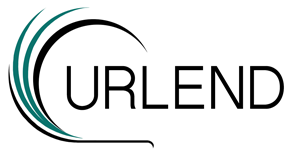It Takes a Village to Raise the Bar on Early Autism Identification and Referral
April 13, 2015

|
The Utah Regional LEND program is tackling the problem of low identification rates for autism in children under 3 years. Within our five-state LEND, one state, Utah, has been part of the CDC/ADDM autism prevalence studies for several years. Although Utah's prevalence rate is always one of the highest, only 33% of children with autism are identified in medical or educational records before age 3. To change this statistic, URLEND trainees worked across organizational and agency boundaries to create a statewide Network for Early Autism Response.
The proposed solution was to create a training program for both rural and urban areas of the state over the summer. One-day training seminars, followed by a monthly teleconsultation network, will support efforts to implement systematic autism screening, identify subtle early signs of autism, problem-solve with front-line professionals in talking to parents about autism, and creating plans for augmenting existing services. A new diagnostic clinic on a sliding fee scale was established at the same time and became a critical element in the network.
Three key elements for success were identified: appropriate audiences who can identify and refer children with autism; effective methods of recruiting; and the training and support needs of the audience. A needs assessment, delivered by Qualtrics, was created for potential participants, but dissemination of the needs assessment electronically and recruitment was dependent on partnering with the following agencies and organizations:
Autism Council of Utah (nonprofit advocacy organization)
State Dept. of Health, including state Early Intervention agency
State Office of Education
University Health Care, Developmental Assessment Clinic (Pediatrics)
Brigham Young University (private)
University of Utah, Utah State University, Utah Valley University (state)
Intermountain Health/Primary Children's Hospital (CME sponsor)
Help Me Grow (developmental follow-up and link to community resources)
Early Childhood Utah, Office of Child Care, Headstart
The URLEND trainees approached these agencies for collaboration on the project. Each of these organizations has a stake in young child services, and the needs assessment was sent out for dissemination through these agencies. Meeting space, continuing education credits, faculty time, and printing were donated by the various partners to bring the training to six locales statewide. Both state telehealth networks and the state education distance learning networks are available for the monthly teleconsult follow ups.
The assembly of partners for the project allowed the training and support program to be implemented within 9 months. This rapid response is due to the work of the URLEND to bring together interdisciplinary agency partners to meet a large need that was beyond the ability of any single agency to address.







